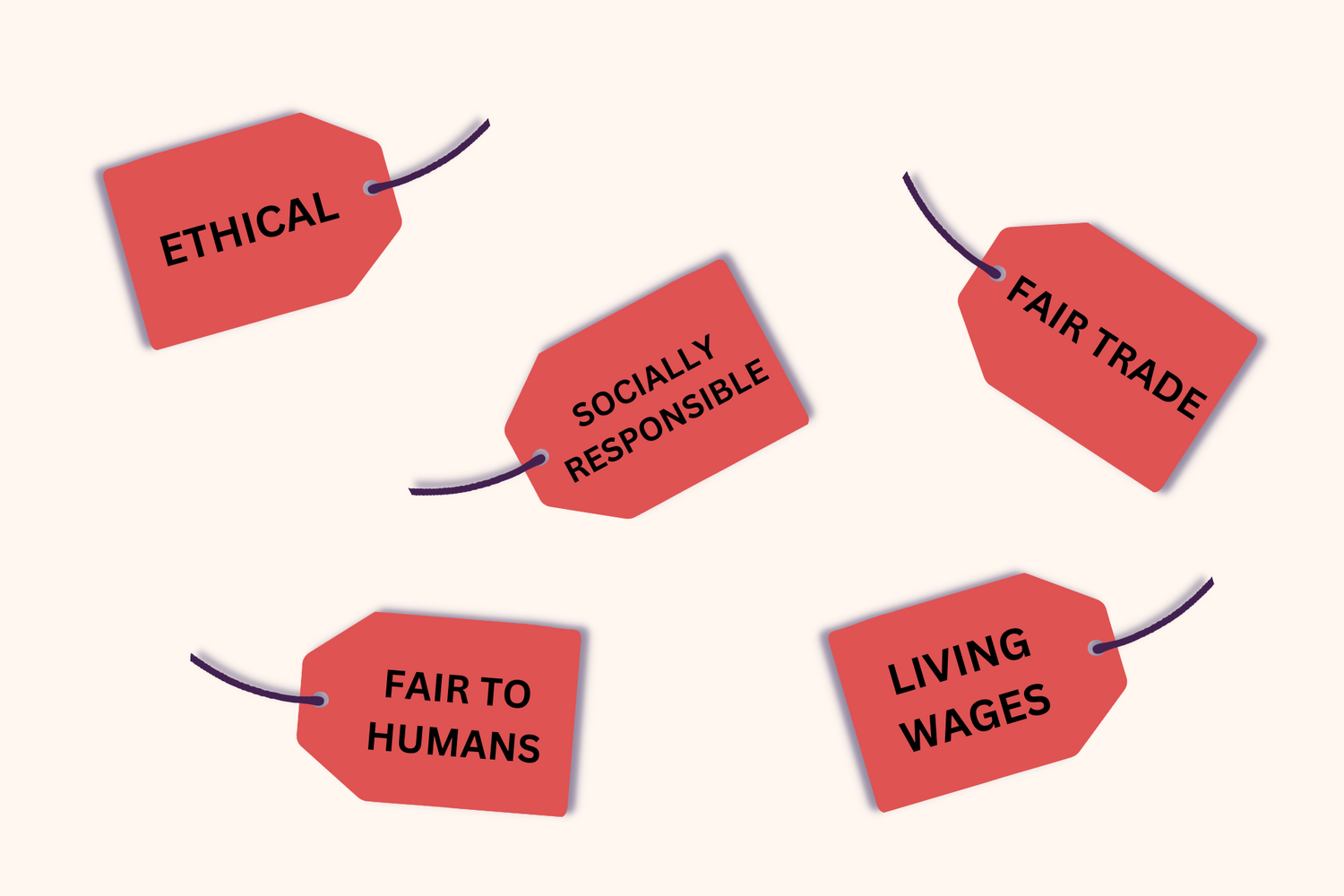If you’re interested in learning more about ethically certified brands, the SA8000 certification is an important certification to know about. The SA8000 certification standard was created by Social Accountability International (SAI) in 1997 and is now considered one of the world’s leading social certifications. Essentially, it sets socially acceptable workplace practices with the goal of fair treatment for workers. There’s a lot to know, so let’s break it down:
What is the purpose of the SA8000 standard?
In many countries and in many different industries, worker exploitation is common. Employees end up in situations where they work in unfair and unsafe working conditions. This could mean that they work long hours without compensation, are underpaid, work in hazardous buildings, and the list of dangers goes on. The top industries using forced labour are the agricultural industry, domestic work, garment factories, nightclubs/bars, and hospitality.

The SA8000 standard compels organisations to conduct business in a humane way, through a framework designed for organisations of all types, in any industry and in any country. The goal is to achieve better working conditions and improved well-being for workers.
What does the SA8000 standard certify?
Based on national laws and internationally recognised standards of work, the SA8000 includes controls that certified brands must meet, across nine areas:
- Child labour
- Forced or Compulsory labour
- Health and Safety
- Freedom of Association & Right to Collective Bargaining
- Discrimination
- Disciplinary Practices
- Working Hours
- Remuneration
- Management System
What are the benefits of the SA8000 standard?
The SA8000 can clearly benefit workers, but it also benefits employers and brands. Here’s how:
For employers:
- Better relationships with workers, customers, and external stakeholders
- Improved quality and productivity within workflow
- Higher employee retention
- Enhanced reputation
For workers:
- Safer workplaces and healthier working conditions
- A living wage
- Increased awareness of rights and opportunities to organise
- Better relationships with management and more input in workplace decision-making
For brands:
- Proof of commitment to the ethical treatment of employees
- Third-party oversight for quality assurance
- Supplier ownership of social compliance program (instead of conducting it themselves)
- Reduced risk of negligence and public exposure
Who does the SA8000 standard certify?
The SA8000 standard certifies organisations of any industry. It’s most commonly used for producers, factories, and farms. Other industries can include manufacturing, hospitals, electronics, educational, engineering, research, fitness, shipping, aerospace, food, automotive, textiles, and many more.

What does the SA8000 certification process look like?
To get the SA8000 certification, an organisation will more or less have to follow these steps:
Step 1: Take the SA8000 self-assessment test. This helps interested organisations understand the management system requirements - and whether they’re ready to apply for the certification.
Step 2: Contact certification bodies. This step starts the evaluation process. Note that the SA8000 standard certification is given by independent third-party certification bodies that are accredited by Social Accountability Accreditation Services (SAAS). Find them here.
Step 3: Choose a certification body. The certification body will then assess the applicant’s readiness for becoming certified by SA8000.
Step 4: Undergo the full certification audit. The certification body will undertake a full audit, as well as an evaluation on the organisation’s management system.
Step 5: Receive the SA8000 certification. Only if the certification body determines that the organisation has implemented the necessary steps for certification, will it receive the SA8000 certification which is valid for 3 years. If it failed any of the past 3 steps, the organisation would have to implement corrective actions.
Step 6: Be prepared for on-site surveillance monitoring. These are typically twice a year and can be announced or unannounced.
Which brands are certified by the SA8000 standard?
At the time of putting this article together, SA8000 is protecting over 2 million workers in over 5,000 facilities. Here are a few fashion brands that are either fully or partially using SA8000 certified factories to make their clothing:
- Girlfriend Collective: All Girlfriend Collective products are cut and sewn in an SA8000 certified factory in Hanoi, Vietnam.

- ECOALF: “To minimise the social risks in our operations across the supply chain, all our suppliers are certified and audited by third parties such as SA8000, BSCI, SMETA.”

- DEDICATED works with different reliable suppliers, each having a credible certification such as SA8000. The brand lists the three SA8000 certified suppliers used for their products, including their first and biggest supplier, Armstrong.

- POMP: “Our supply chain is SA8000 certified for modern and ethical working conditions all throughout.”

Controversies
Of course, it would be remiss of us to not address some of the shortcomings and controversies associated with SA8000. Along with the inherent limitations of voluntary audits and many other related issues (as reported on here and here), there is also sadly a threat to human life.
On 11 September 2012, 264 workers lost their lives to a fire at Ali Enterprises in Karachi, Pakistan. According to the Responsibility Outsourced report, neither SAAS, its technical experts, nor RINA (SAAS-approved certification body) had ever visited the factory yet the factory had received SA8000 certification.
On 24 April 2013, the collapse of the Rana Plaza building in Dhaka, Bangladesh, which housed five garment factories, killed at least 1,132 people. Audits of two factories in the Rana Plaza building in Savar, Bangladesh, carried out against the BSCI code of conduct (based on the SA8000 accreditation) completely failed to identify the illegal construction of the building that led to the tragic loss of life.
The significant number of fatalities has naturally led to questions being raised about the quality of the SA8000 audits undertaken and the need for auditors to engage in compensation efforts.
SAAS has addressed how processes have changed following the incident in Pakistan here and how important continuous improvement is. At the end of its statement, SAAS refers to the idea that "SA8000 certification is a tool – a means, not an end."
It might sound like deflection but comparing it to financial audits, we might come to the view that the issue is mirrored in the world of finance too (albeit with loss of jobs instead of direct fatalities). There are instances where financial auditors have considered that a business is a going concern (a fundamental assumption that the business is viable for foreseeable future, defined as at least the next twelve months in the UK) only for the business to go under soon after. That some auditors fail to uncover/foresee the issues that such businesses may face does not lead to a wholesale loss of confidence in the concept of audits (although detractors calling for improvements do exist).
While social audits are voluntary, auditors, as with financial audits, face the self-interest threat to independence. This is where the auditors are paid by those they are auditing and so there exists an incentive to under-report violations to ensure further accreditation related revenue. As competition in the auditing industry increases, there is a risk that the search for efficiencies (to ensure profitable audits) leads to a lower level of scrutiny.
By and large the world of financial audits has evolved over time with regulation, robust independent challenge and occasional errors from auditing firms (deception/corruption notwithstanding). Similarly, we might hope that the world of social audits will go through a process of improvement such that while audit firms may still make errors, the consequences will not be so grave.
Conclusion

Yes, POMP’s clothing is fully SA8000 certified. But it doesn’t end there. We complement that certification with others - the best way to ensure maximum worker protection as well as sustainability. Our supply chain includes organic cotton that is certified by the Global Organic Textile Standard (GOTS) - the highest standard for cotton, but also widely praised for its social requirements. And our finished garments are certified by OEKO-TEX Standard 100 to make sure that they’re free from harmful chemicals.
It’s a mix that we feel takes us beyond the sustainable fashion offerings of most brands out here. Take a look at our sustainability page to find out more - or shop one of our ranges, like our recycled or sustainable essentials ranges.
We hope we’ve given you a useful overview of the SA8000 certification. Any other questions, just ask!





1 comment
Sarah
Nice content. Thanks for sharing this content. We are providing SA 8000 documents for SA 8000 certification. Just go to this site. Source Link: <a href=” https://www.documentationconsultancy.com/sa8000-documents.html”> SA 8000 document helps to achieve an SA 8000 certification
Nice content. Thanks for sharing this content. We are providing SA 8000 documents for SA 8000 certification. Just go to this site. Source Link: <a href=” https://www.documentationconsultancy.com/sa8000-documents.html”> SA 8000 document helps to achieve an SA 8000 certification